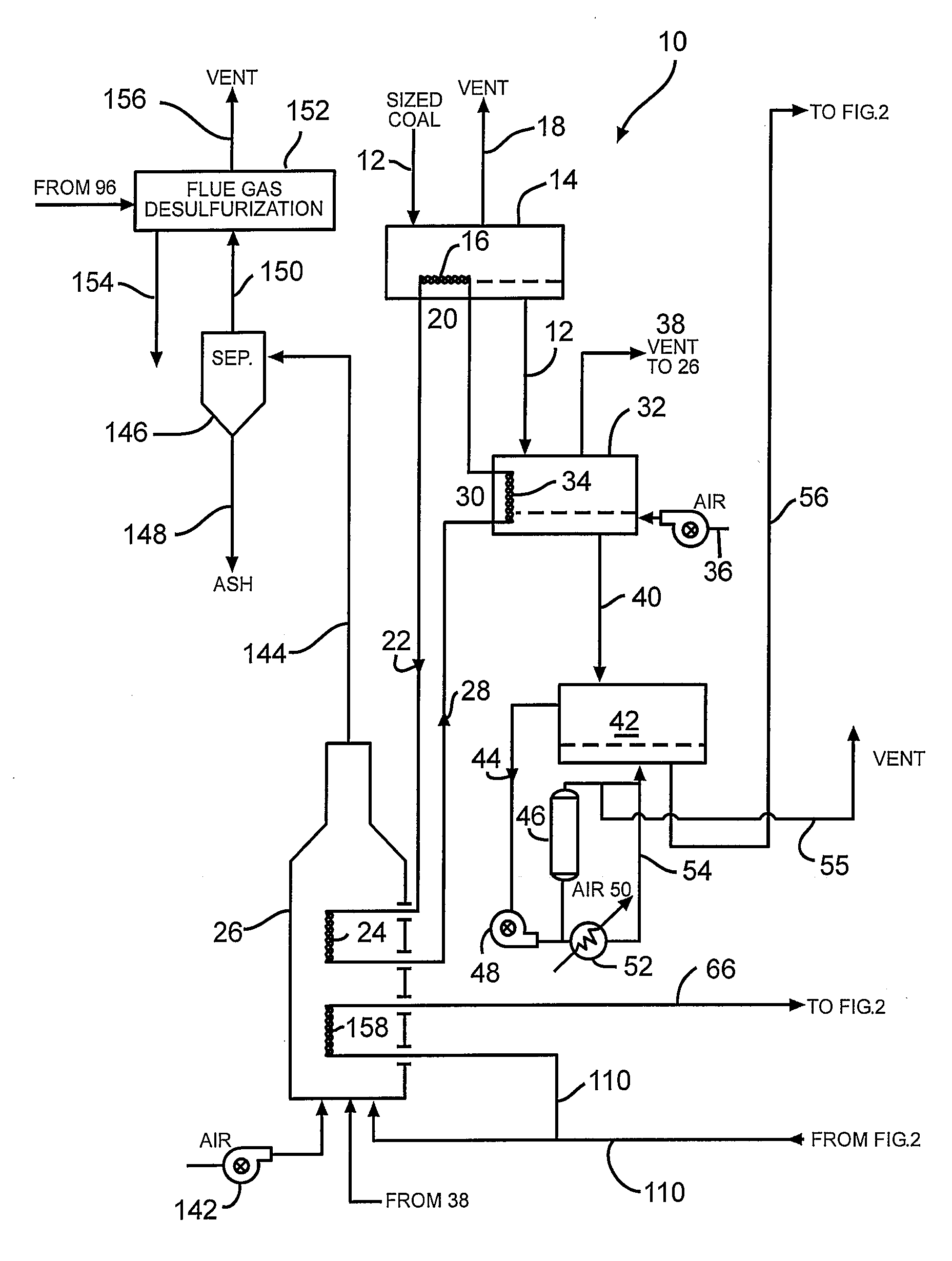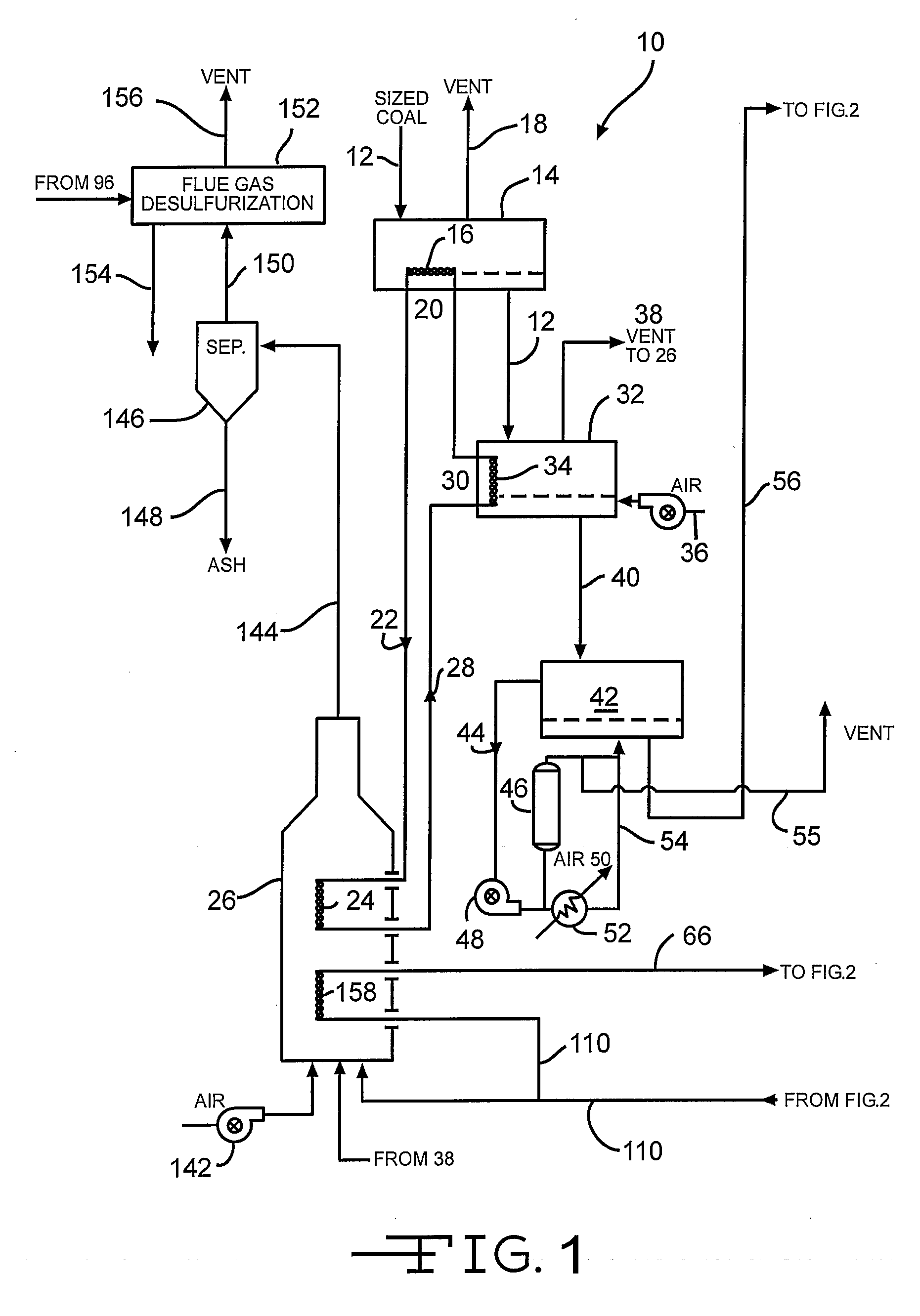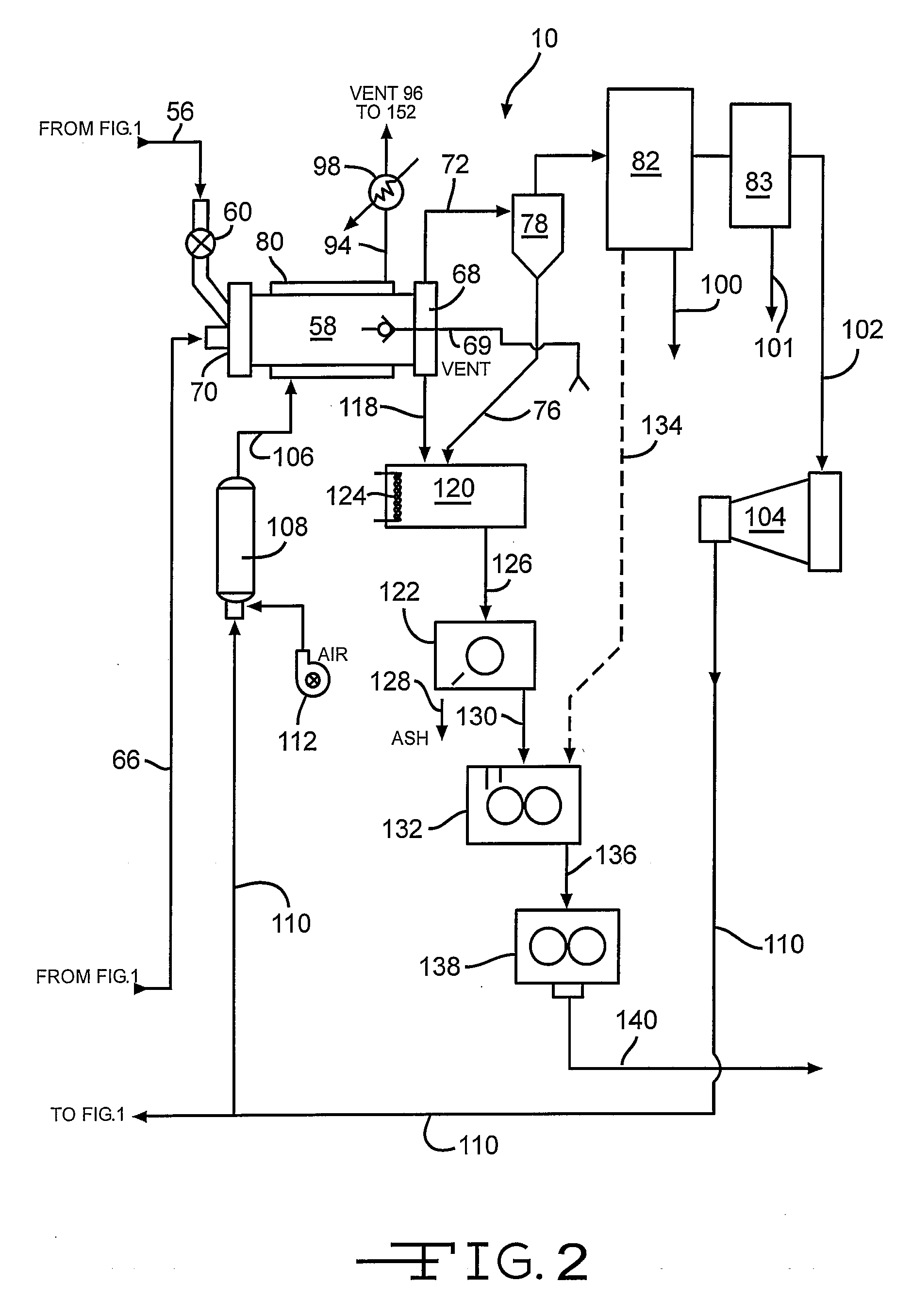Process for treating bituminous coal by removing volatile components
a bituminous coal and volatile component technology, applied in the field of coal processing, can solve the problems of difficult removal of coal char, mercury, inorganic sulfur and organic sulfur, etc., and achieve the effect of reducing ash and sulfur
- Summary
- Abstract
- Description
- Claims
- Application Information
AI Technical Summary
Benefits of technology
Problems solved by technology
Method used
Image
Examples
example i
[0081]The content of the resultant coal char product according to the process described herein is shown in Table 1 below. It is to be understood that the composition of the resultant coal char product is very much a function of the feed coal, and laboratory testing is needed to verify yields for each product for various types of bituminous coals.
TABLE 1Pulverized Coal Char CharacteristicsAs Received CoalPulverized Char ProductMoisture6.151.50Ash9.7810.50Volatile39.4518.00Fixed Carbon44.6270.00100.00100.00Sulfur4.091.76Pyritic2.060.81Sulfatic0.140.20Organic1.890.75Heating Value12,170 BTU / lb13,150 BTU / lb
example ii
[0082]A forensic analysis of Western Kentucky, Ohio County and Paradise Quadrant bituminous coal was conducted. It was determined that based on 25 samples 36.91% of the dry coal ash formed after combustion is non-oxide hematite (Fe2O3). It was further discovered that 34% of the resultant iron oxide resulted from pyrite. Therefore, the other 66% of the iron oxide preexisted in the coal ash. This iron oxide and mineral matter so associated with the iron oxide is reduced to the paramagnetic form, magnetite (Fe3O4). This leads to the further beneficiation of the coal as up to 50% of the coal ash may be removed in the downstream dry magnetic separation step of the process disclosed herein.
PUM
| Property | Measurement | Unit |
|---|---|---|
| Temperature | aaaaa | aaaaa |
| Temperature | aaaaa | aaaaa |
| Temperature | aaaaa | aaaaa |
Abstract
Description
Claims
Application Information
 Login to View More
Login to View More - R&D
- Intellectual Property
- Life Sciences
- Materials
- Tech Scout
- Unparalleled Data Quality
- Higher Quality Content
- 60% Fewer Hallucinations
Browse by: Latest US Patents, China's latest patents, Technical Efficacy Thesaurus, Application Domain, Technology Topic, Popular Technical Reports.
© 2025 PatSnap. All rights reserved.Legal|Privacy policy|Modern Slavery Act Transparency Statement|Sitemap|About US| Contact US: help@patsnap.com



